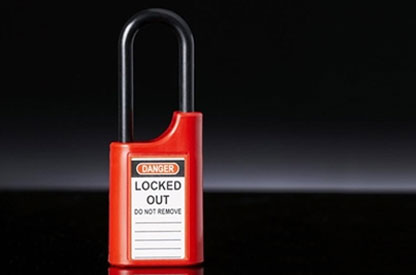Although there are no specific UK regulations purely centered around the process of lockout, it is referenced during the regulations of the Requirements for Electrical Installations, and focuses on the isolation of energy sources and the enforcement of isolative procedures.
The first regulation comes under section 527.2.2.4 of the book and states:
“Provision shall be made for securing off-load isolating devices against inadvertent of unauthorised opening.
Note:
This may be achieved by locating the device in a lockable space or enclosure or by padlocking. Alternatively, the off-load device may be interlocked with a load-breaking one.
Where a link is inserted in the neutral conductor, the link shall comply with either or both of the following requirements:
- It cannot be removed without the use of a tool
- It is accessible to skilled persons only
What this regulation is stating is that it is extremely important to correctly isolate an energy source, and one of the most effective methods of doing this is to use lockout/tagout procedures and equipment.
By using these procedures, a trained maintenance team is able to drain an energy source of energy, render it inoperable and prevent it from being energised until the maintenance is completed.
The concept of lockout is also governed over by the following regulation:
537.3.1.2
“Suitable means shall be provided to prevent electrically powered equipment from becoming unintentionally reactivated during mechanical maintenance, unless the means of switching off is continuously under the control of any person performing such maintenance.”
Risk Assessment
One of the most important parts of Health and Safety on UK soils for an organisation is the usage of a risk assessment, which can be used to create a safer working environment.
A risk assessment is also used to determine where lockout can be enforced, and is a great step towards determining which energy sources can harm members of staff and how they could be locked out to prevent this.
On the HSE’s website, they define a risk assessment as:
“A careful examination of what, in your work, could cause harm to people, so that you can weigh up whether you have taken enough precautions or should do more to prevent harm. Workers and other have a right be protected from harm caused by a failure to take responsible control measures.”
This basically means that a lockout procedure can be used as a responsible control measure, and if correctly enforced, lockout can be used to promote workplace safety and prevent potentially fatal accidents.
The HSE also states that as part of risk evaluation you should ‘prevent access to the hazard’ and ‘organise work to reduce exposure to the hazard’, both of which are used during lockout and tagout procedures.

